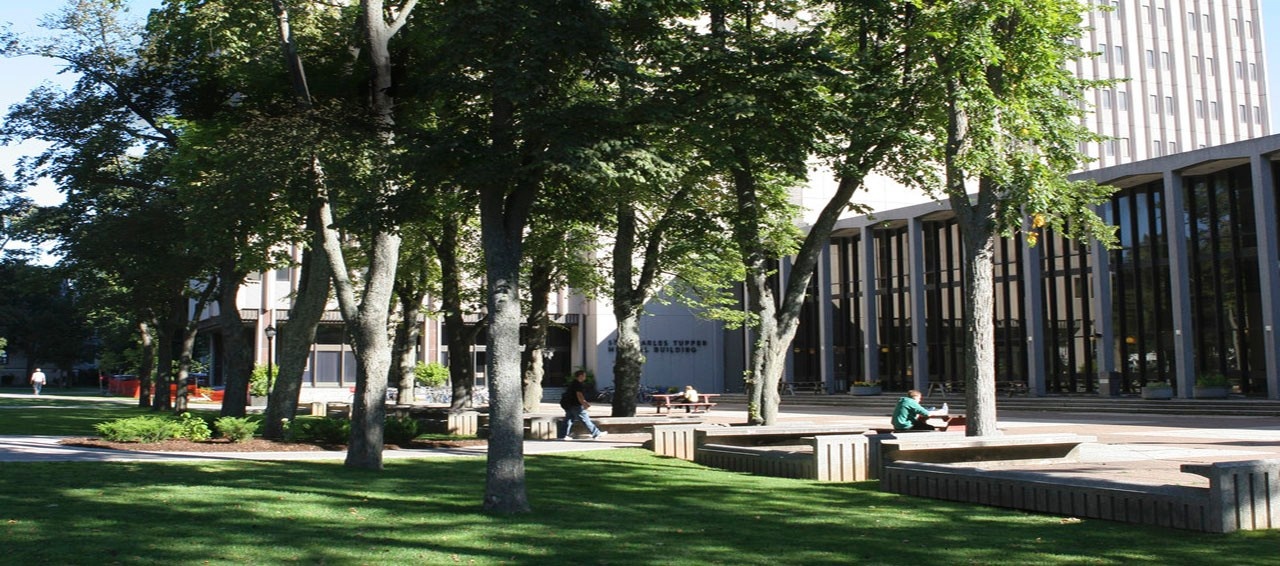News
» Go to news mainStudying Dalhousie's tech‑enabled medical curriculum

Dr. Anna MacLeod, assistant professor in the Division of Medical Education, is conducting a three-year study exploring Dalhousie Medical School’s distributed medical education program. It’s the first study of its kind.
“Technology allows education to become more and more distributed,” says MacLeod. “This change is clearly happening in medical education. With Dalhousie Medicine New Brunswick (DMNB) and our other clinical sites, we are very much a distributed program.”
MacLeod and her international research team are interested in exploring the implications of integrating technology into teaching models. The social and human side of technological renewal are the heart of the study.
“Sitting in on a typical undergraduate lecture at the med school, you see how technology has become an integral part of our program. Students are simultaneously learning at two sites and they’re all using laptops, tablets and smart phones. Questions and interactions are facilitated through buttons and cameras, and a team of highly trained IT professionals is behind the scenes making sure it all works,” MacLeod states. “I think there’s an obligation to understand how this technology is affecting us.”
Keeping comparability in medical education
MacLeod’s study hypothesizes that the delivery of distributed medical education now relies on a myriad of “actors”. Prior to Dalhousie’s tech upgrades, medical education mainly occurred between student and professor. But a largely paperless curriculum, advanced videoconferencing systems between Halifax and New Brunswick campuses, and electronic planning, management and operating tools brings in new players, like IT staff.
Greg Power, director of MedIT at Dalhousie Medical School, has been overseeing the med school’s tech upgrades and collaborating with MacLeod on the project.
As Power sees it, Dalhousie’s first and second-year students have been a part of the technology renewal for the past two years. But as medical students in Halifax and New Brunswick prepare to move into distributed sites across the Maritimes for their clerkships, the goal is to have technology continue to enable education to the same high standard.
Achieving this comparability in education, according to Power, is one of his team’s primary objectives.
“Everyone involved in the project believes in the same learning experience for medical students and those entering a clerkship,” says Power. “Students need to feel as though they are still being heard. The technology here is providing an in-person feel that ordinarily may be lost in a distributed learning environment.”
Challenging traditional teaching models
But MacLeod believes there is much more happening behind the scenes.
Advances in technology and innovative learning tools are well supported, but it also forces faculty and students to build technological competencies to fully engage with curriculum. MacLeod hopes to understand what impact these changes have had on students, faculty and staff.
“Distributed learning means the ‘professor-at-the-front-of-the-class’ model is being reconsidered, and it’s forcing us to think critically about how we teach and learn,” says MacLeod. “At Dalhousie Medical School, the availability of new technologies has meant changes in how we plan, deliver and even assess our curriculum. And, perhaps most interestingly, these new technologies have changed the way colleagues and classmates interact with each other. So, I’m interested in what it means to study and work in an institution that is in the midst of such a change.”
These challenges to traditional educational models have social implications, and that is what interests MacLeod. “Being a medical school professor at Dalhousie University is very different today than it was even just a few years ago. Likewise, being a student or a staff member is also very different. I’m expecting that people will report having both positive and negative experiences.”
Adding to distributed education best practices
The study is funded by the Social Sciences and Humanities Research Council of Canada, and as MacLeod describes, a victory for the Division of Medical Education.
“Being funded for a social sciences study inside a medical institution is certainly challenging,” admits MacLeod. “Normally research related to medicine or medical education would be funded by medical education-specific funding agencies, or by health research focused funders, like CIHR (Canadian Institutes for Health Research). The fact that we’ve been funded by SSHRC is quite an accomplishment.”
As an ethnographic research project, MacLeod will be assessing Dalhousie’s educational culture as a whole. The first phase of the study involved a critical review of documents and policies at Dalhousie Medical School structuring the technology renewal. Qualitative data will also be collected throughout the study’s three years by observing technology-mediated events like lectures, seminars, and committee meetings and through interviews and focus groups.
As MacLeod and her team delve into their research, the study will show how well technology is being implemented, how it is experienced by its users, and will contribute to the global understanding of best practices in distributed education.

An institutional ethnographer and education researcher, Dr. Anna MacLeod is the study’s principal investigator. The research team is comprised of local and international institutional ethnographers, colleagues of Dalhousie’s Division of Medical Education and mentors and collaborators from across Canada.
Recent News
- Dalhousie’s first physician assistant cohort steps into Nova Scotia’s healthcare system
- Dalhousie med students explore pediatric care in Austria
- Dalhousie researchers shine at Discovery Awards with four top honours
- New $2M national study to uncover how biology, social factors shape MS outcomes
- Pathology EDIA Committee makes strides during 2024‑2025 year
- CCfV’s impact on vaccine innovation
- Unlocking the secrets of memory—with fruit flies
- Celebrating mobility research and the power of philanthropy
